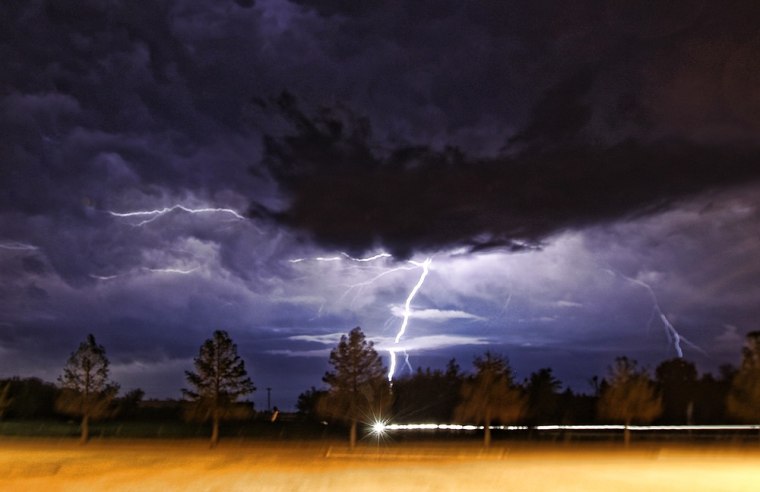Monsoons, hurricanes and other extreme weather events may trigger earthquakes when faults are ready to rumble.
The new research presented this week at the American Geophysical Union's annual meeting in San Francisco does not suggest that all earthquakes are caused by storms or that all storms cause quakes. But by identifying some of the many conditions that put stress on faults, the new work may help scientists better forecast future tremors.
Experts hope to develop more accurate ways to warn the public before massive devastation ensues.
NEWS: No Link Between Super Moon and Earthquake
"There's a holy grail for any geophysicist being able to one day predict earthquakes," said Thomas Ader, a graduate student in geophysics at the California Institute of Technology in Pasadena. "All we're doing now is trying to understand, after earthquakes happen, why they happened."
"If you push on a fault, how is it going to respond?" he added. "It's a question we don't understand clearly right now."

WATCH VIDEO: The Pacific Northwest faces high probability of a mega-earthquake in the next 50 years.
Ader works in Nepal's Himalaya Mountains, where the monsoon season often brings a meter (3.3 feet) or more of rain each summer. The weight of all that water bends the whole underground system of tectonic plates, Ader said, which scientists can measure through slight seasonal movements in the positioning of GPS stations around the country.
SCIENCE CHANNEL: Top 10 Natural Disasters
After all that water washes away by wintertime, Ader said, plates unbend, GPS stations return to their original positions, and the release of pressure adds a tiny amount of stress that may be enough to trigger impending earthquakes. Looking at data from 1995 to 2004, Ader found a larger number of magnitude 3 to 5 earthquakes in the winter months than in the summer.
The quakes weren't any stronger than they would've been without the stimulating effects of monsoons, he said. But the rains seem to have affected their timing.
Tidal forces from the sun and moon put about the same tiny amount of stress on faults twice a day, Ader added, but he found no link between tides and earthquake patterns. That suggests that there is a critical amount of time needed for stress to accumulate before it makes a difference -- somewhere between half a day and a year.
Hurricanes, typhoons and cyclones can also affect the timing of earthquakes in mountainous tropical areas, found Shimon Wdowinski, a geophysicist at the University of Miami in Florida who, along with a colleague, analyzed data from the last 50 years of earthquakes in Haiti and Taiwan.
Eighty-five percent of quakes that were magnitude 6 or higher happened within the first four years after excessively wet storms, Wdowinski and a colleague found. That rate of trembling is five times higher than what overall trends would predict.
For earthquakes that were magnitude 5 or higher, 35 percent of them happened in the first four years after the wettest storms, which was double the expected rate.
In January 2010, for example, a catastrophic earthquake shook Haiti—about 18 months after the island was hit by a severe hurricane season that included two tropical storms and two hurricanes.
NEWS: Earthquake-Proof Bridge Built in San Francisco
Wdowinski found three similar examples in Taiwan over the last five decades. One large earthquake struck there in 1999, for example, three years after a typhoon caused major damage and flooding. Another quake hit the region in 2010, seven months after a cyclone dropped more than 115 inches of rain in just five days. It generally takes five years for the same amount of rain to add up in San Francisco.
In these extreme cases, Wdowinski suspects, rain eventually changes the surface of the earth enough to affect what's happening underneath. That usually happens between about three months and 3.5 years after the initial rainfall begins.
"All this rain induces a lot of landslides and a huge amount of erosion, and that carries a lot of material away from the mountains into the ocean," he said. "My hypothesis is that this erosion is removing weight from the mountains and consequently unloading forces on the faults that sit there. This unloading determines the timing of the event."
The relationship between major storms and earthquakes only makes sense for steeply mountainous areas in tropical regions, Wdowinski said. He plans to look next for similar patterns in Japan, the Philippines and Central America.
Someday, this information could lead to improved earthquake forecasting systems and policies, but that is still a long way off.
